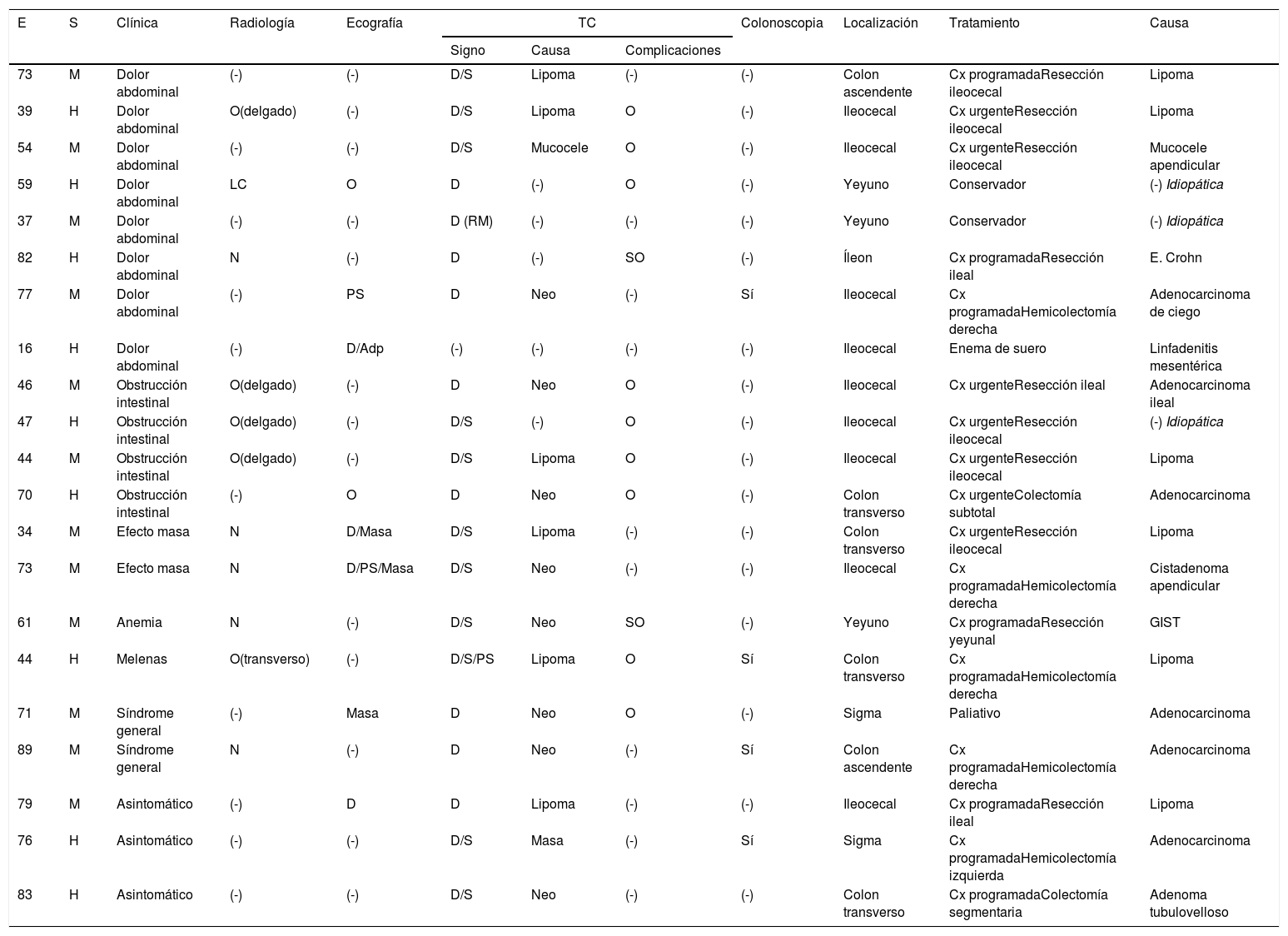Las invaginaciones intestinales en adultos son de difícil diagnóstico debido a la inespecificidad de los síntomas. Sin embargo, la mayoría tienen una causa estructural que requiere tratamiento quirúrgico. El objetivo de este estudio es revisar sus características epidemiológicas, hallazgos en imagen y manejo terapéutico.
Materiales y métodosEstudio retrospectivo de las invaginaciones intestinales que precisaron ingreso hospitalario diagnosticadas en nuestro hospital entre 2016 y 2020. De un total de 73 casos fueron excluidos errores de codificación (n=6) y pacientes menores de 16 años (n=46), resultando 21 invaginaciones en adultos.
ResultadosLa edad media fue de 57 años, y el dolor abdominal fue la manifestación clínica más frecuente en el 38% de los casos (n=8). El diagnóstico mediante tomografía computarizada (TC), con la presencia “del signo de la diana”, alcanzó una sensibilidad del 100%, siendo la región ileocecal la localización más frecuente en un 38% de los pacientes (n=8). Un 85,7% de los casos (n=18) tenían una causa estructural y el 81% (n=17) requirió cirugía. Los resultados anatomopatológicos fueron concordantes con la TC en un 94,1%, siendo la etiología más frecuente la neoplásica: 35,3% benignas (n=6) y 64,7% malignas (n=9).
ConclusionesLa TC es la prueba de elección en el diagnóstico de las invaginaciones intestinales y resulta determinante a la hora de identificar la etiología y decidir el manejo terapéutico.
Intestinal intussusception is difficult to diagnose in adults because the symptoms are nonspecific. However, most have structural causes that require surgical treatment. This paper reviews the epidemiologic characteristics, imaging findings, and therapeutic management of intussusception in adults.
Materials and methodsThis retrospective study identified patients diagnosed with intestinal intussusception who required admission to our hospital between 2016 and 2020. Of the 73 cases identified, 6 were excluded due to coding errors and 46 were excluded because the patients were aged<16 years. Thus, 21 cases in adults (mean age, 57 y) were analyzed.
ResultsThe most common clinical manifestation was abdominal pain, reported in 8 (38%) cases. In CT studies, the target sign yielded 100% sensitivity. The most common site of intussusception was the ileocecal region, reported in 8 (38%) patients. A structural cause was identified in 18 (85.7%) patients, and 17 (81%) patients required surgery. The pathology findings were concordant with the CT findings in 94.1% of cases; tumors were the most frequent cause (6 (35.3%) benign and 9 (64.7%) malignant).
ConclusionsCT is the first-choice test for the diagnosis of intussusception and plays a crucial role in determining its etiology and therapeutic management.













